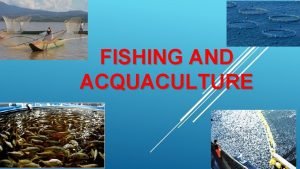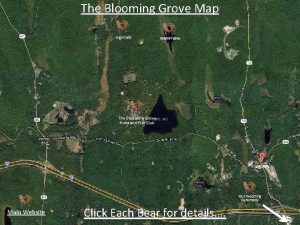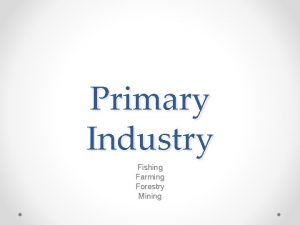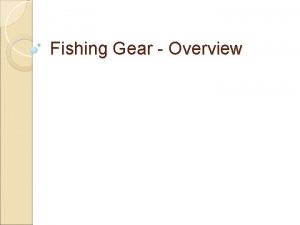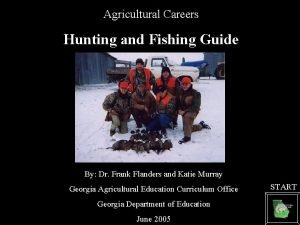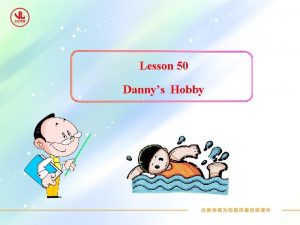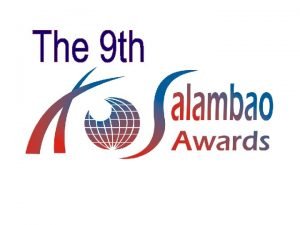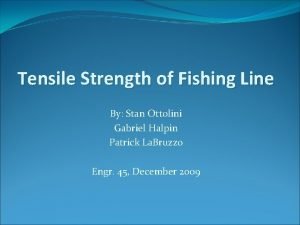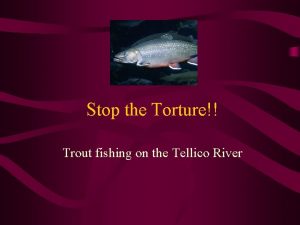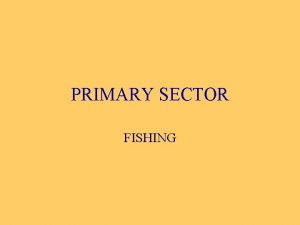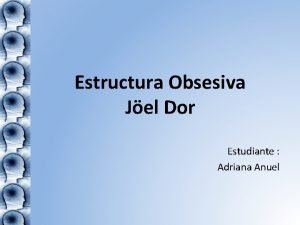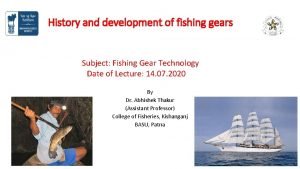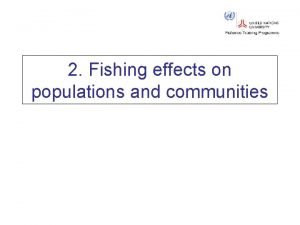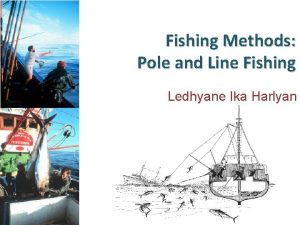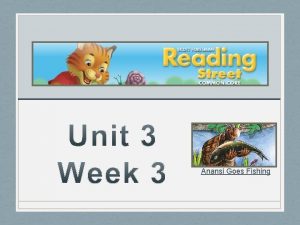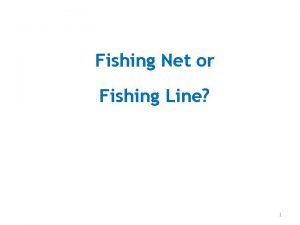FISHING AND ACQUACULTURE IES M ANUEL D Fishing









- Slides: 9

FISHING AND ACQUACULTURE IES M ANUEL D

Fishing is the practice of catching fish and other water species for food or as raw materials for industry. 85% of the catching is for human consumption Fish is more consumed in developed countries being imported from emerging and less developed countries. China is highest fish production as well as the highest consumption per capita.

FISHING TECHNIQUES LONGLINE FISHING TRAWLING LIFT NETTING

TYPES OF FISHING (I) • TRADITIONAL FISHING OR COASTAL FISHING uses small boats and it is done near the coast during the day and every day the fisherman sells his fish in the fish-market. It uses simple fishing techniques: hooks, networks, harpoons… This type of fishing play an important role in developing countries diet.

(II) • Industrial fishing is also called off-shore fishing or deep sea fishing. It is used to catch a great volume of fish. It uses huge and well equipped boats to remain at sea for weeks or months. • Their boats are large, called boat-factories and use advanced fishing techniques, like radars to detect shcool of fish. Also they have enormous freezers to preserve the fish in good conditions. • The catch can be transformed and packaged in the factory ships.

FISHING PROBLEMS • Overfishing • Tradidional fishing grounds depleting. • International legislation to limit fishing and reserving the fisheries for the coastal countries • Sustainable fishing (avoiding trawling and limiting catches)

AQUACULTURE OR FISH FARMING Aquaculture or fish farming is the raising of fish and shellfish on special farms. Aquaculture can take place in the open ocean, in bays, in ponds, in greenhouses, and even in buildings. The ancient Egyptians were raising fish over 4, 000 years ago. The Chinese also have a long history of fish farming. They raised a fish called a common carp because it was good to eat. Some researchers are experimenting with raising fish in giant cages many miles offshore. The cages are equipped with cameras and computers so that scientists on dry land can see what is happening. FLOUNDER and COD are being raised in cages. In Japan, oysters are farmed to produce cultured PEARLS. A tiny bead is placed in the oyster. The bead bothers the oyster so it produces a smooth shiny substance called NACRE over the bead. The layers of nacre that grow over the bead form the pearl.

TYPES OF AQUACULTURE There are 3 types of aquaculture according to the location they take place: • Marine aquaculture This refers to culturing species that live in the ocean in artificial ponds. Species include oysters, clams, mussels, shrimp, and salmon. • Freshwater aquaculture This refers to culturing species that are native to rivers, lakes, and streams. Species include trout, catfish, tilapia, and bass. • Mariculture Raising plants and animals that do well in marine (salt water) and brackish water environments. Examples are clams, oysters, tuna, mussels, turbot and shrimp

TYPES OF AQUACULTURE Aquaculture activities can be classified according to their degree of intensity: • Intensive — involving the high-density culture of organisms, with regular and nutritionally complete feeding in a very small space. • Semi-intensive — involving lower densities, with naturally occurring feed, and some direct feeding. • Extensive — involves a low density of organisms, often with naturally occurring feed.
